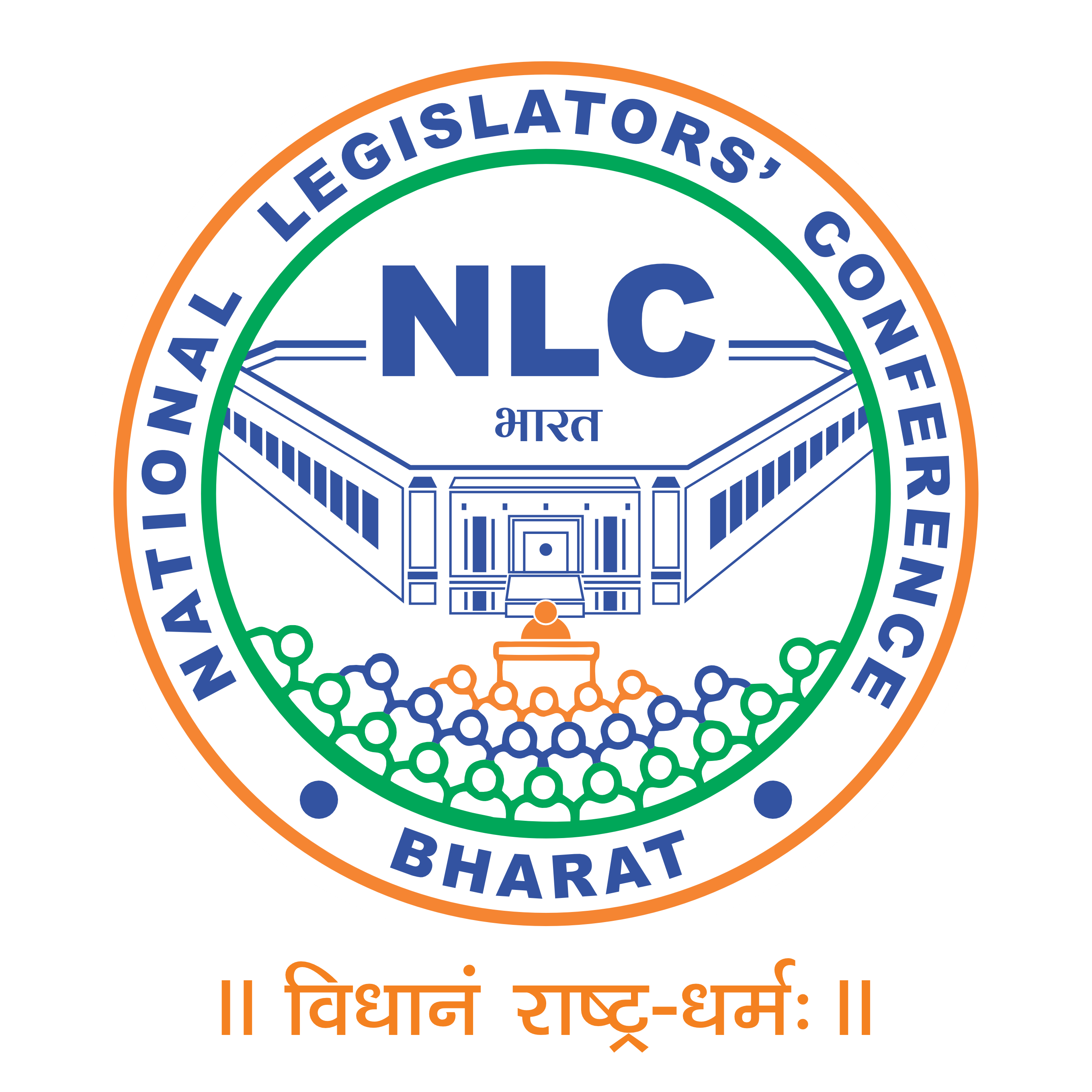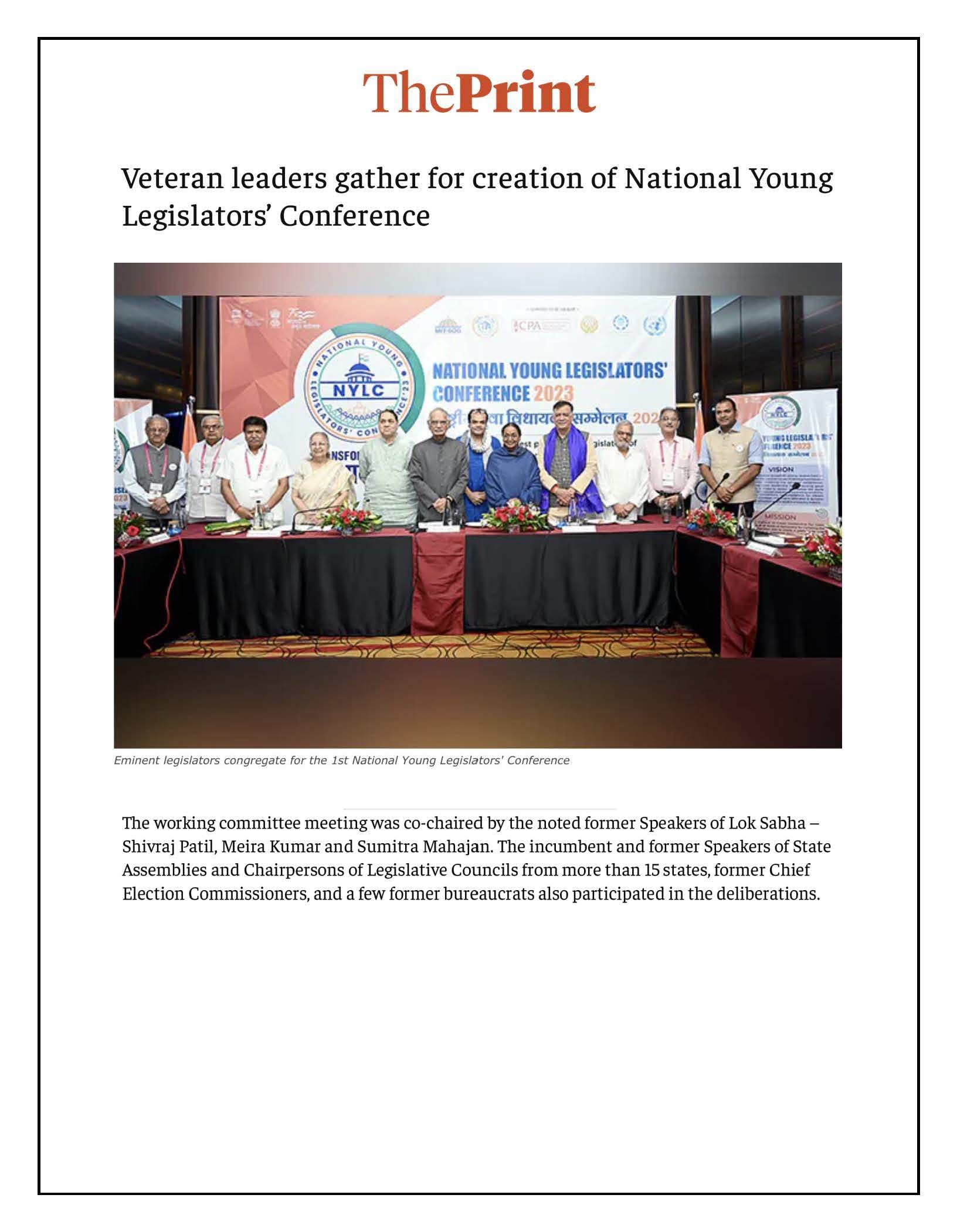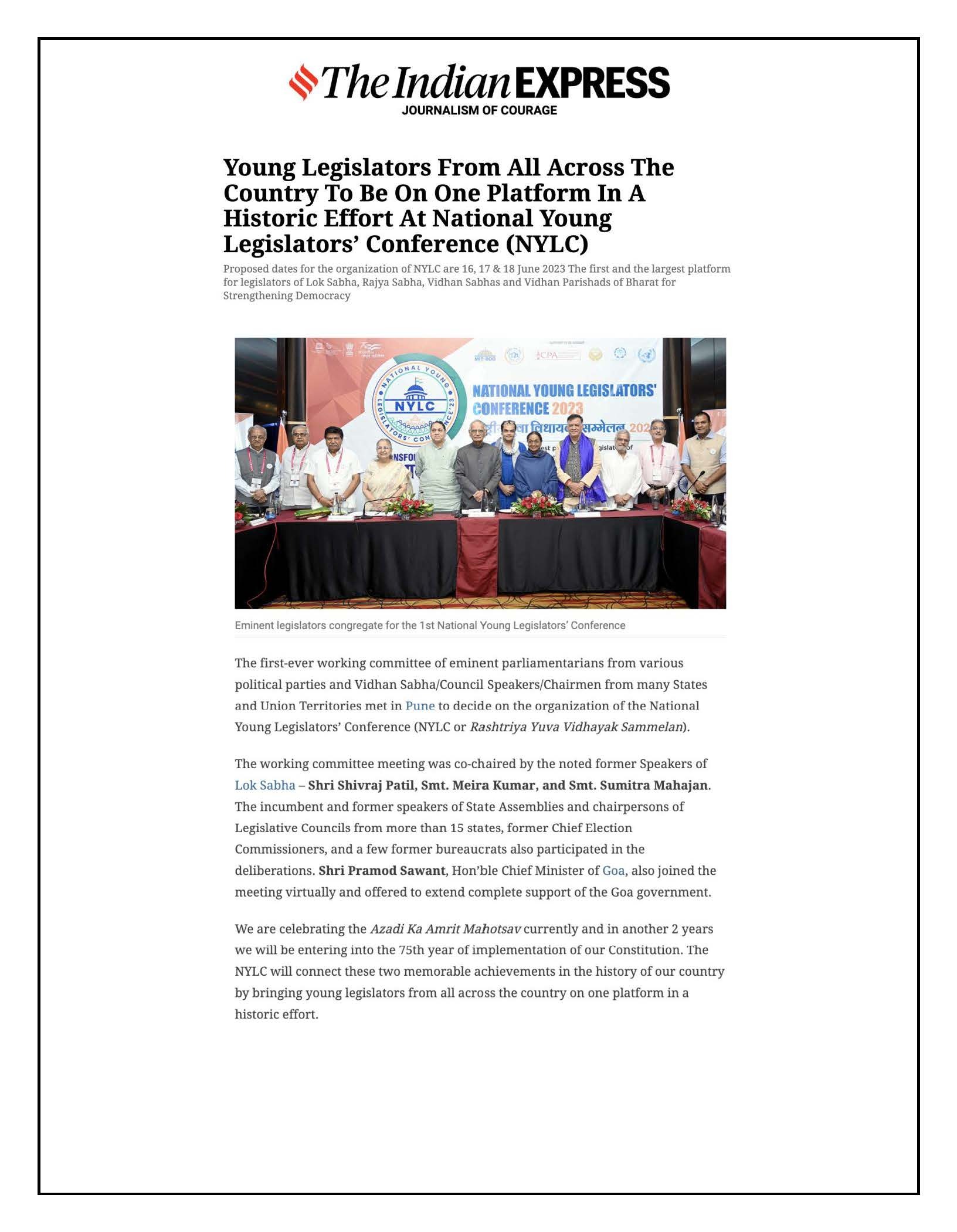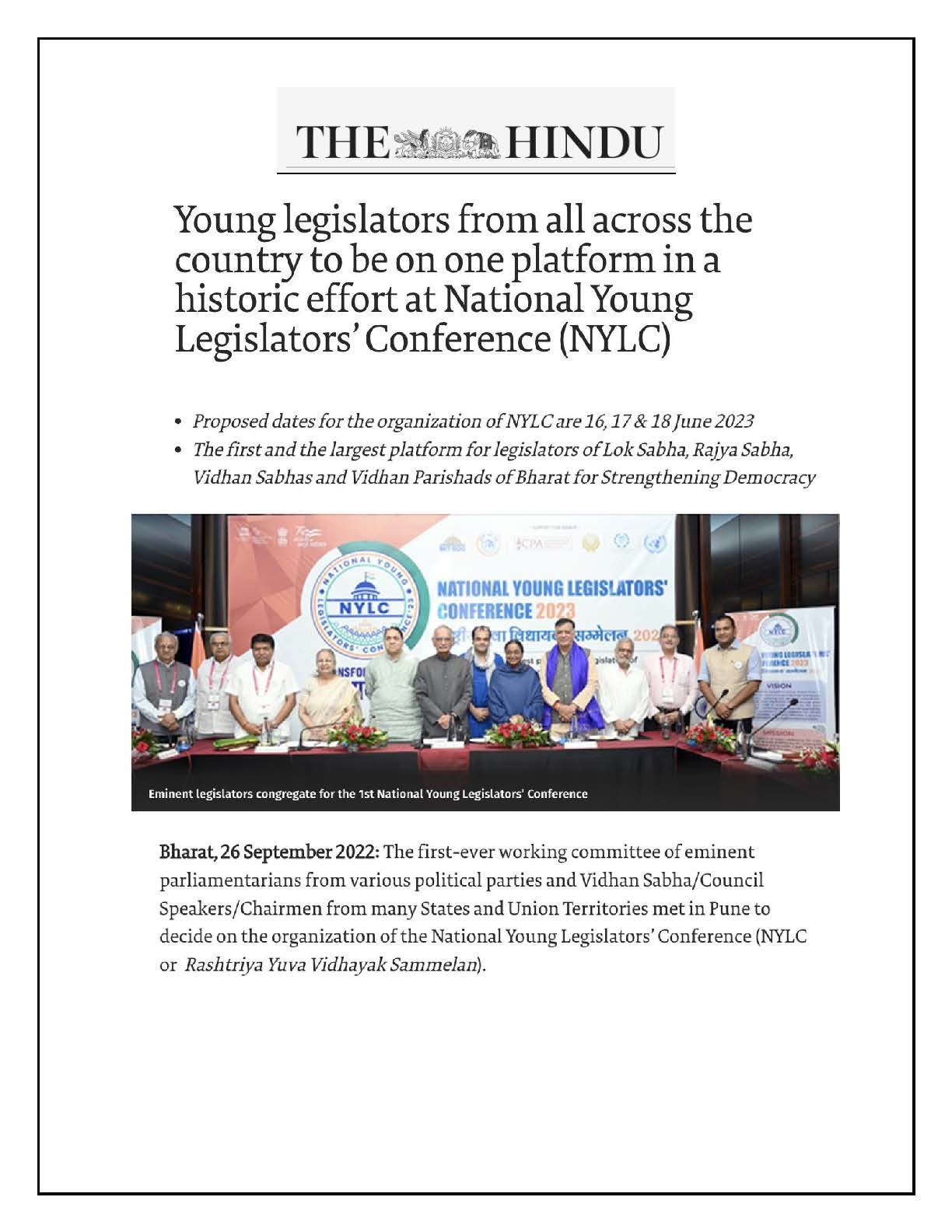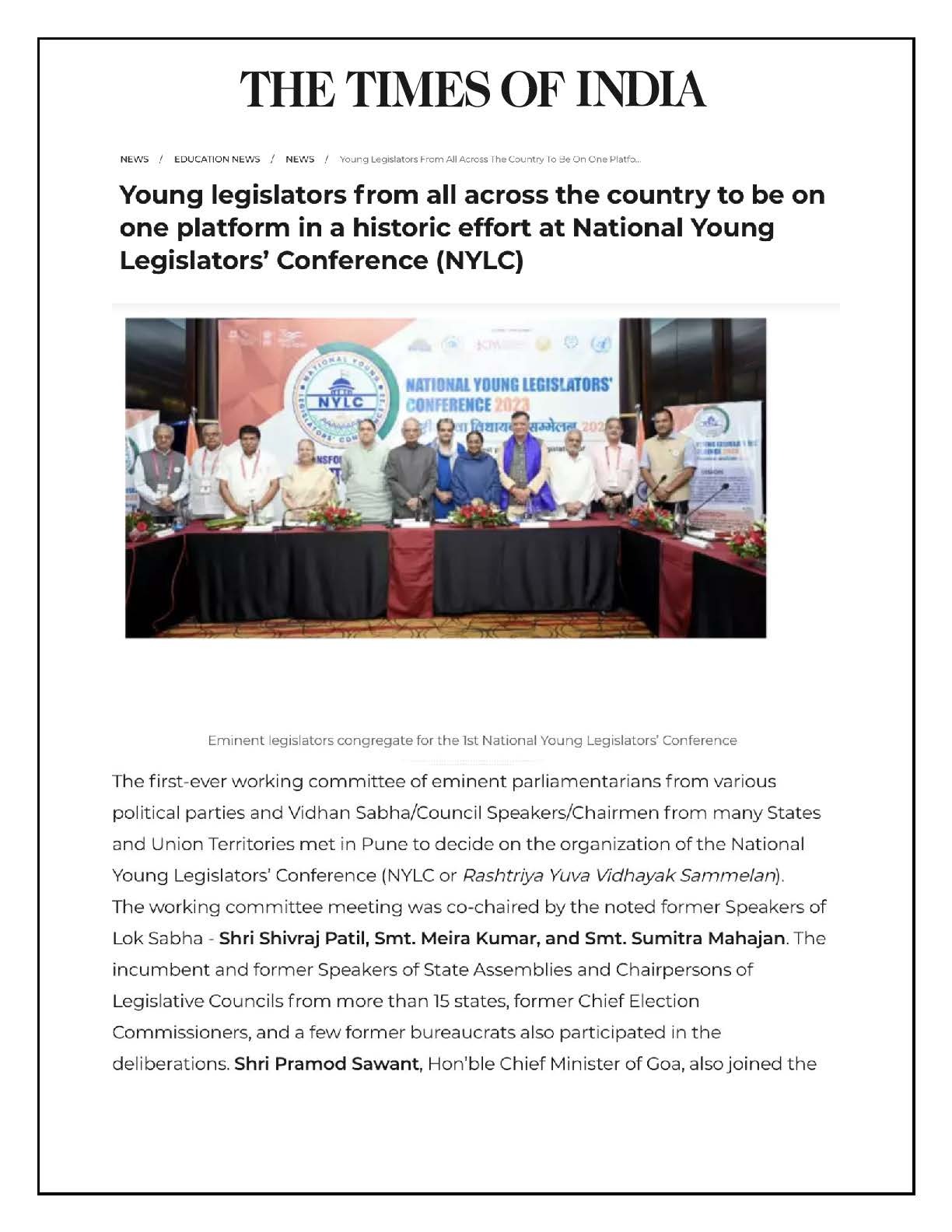Session Outline:
Two closed door roundtable discussions will be held during the National Legislators Conference Bharat on June 16th and 17th 2023. These discussions are aimed to take stock of the progress made by Independent Bharat from 15th August 1947 till now and look at the road ahead to 2047. The discussion will dwell on “What is our collective aspiration as we look forward to 2047?”. It will also cover the metrics denoting landmarks that we should focus on achieving by then?”
Concept note
Day 1
Tangible & Measurable metrics
Independent Bharat’s early 2 decades were fraught with various challenges. The partition of Bharat and Pakistan led to one of the world’s largest mass migrations with lakhs of lives lost and millions of livelihoods disrupted. This was followed by the wars with China and Pakistan where precious resources had to be diverted to ensure safety at our borders. The planned economy through various 5 year plans provided core industries and infrastructure that became bedrock of Bharat’s growth. However, the participation by the private sector was subdued and limited in nature. The GDP (constant INR) grew from 7.3 Trillion INR in 1960 to 25.145 Trillion INR in 1990. In 1991, liberalization provided a much needed sprint in the growth of Bharat’s economy. The GDP (constant INR) in 2021 is at 147 Trillion INR. GDP per capita, PPP (current international $) of India is a little over a third of China. The GDP per capita across the states of India still have huge disparity. The formal employment in Bharat is still less than 10% of the overall employment workforce. The unemployment and underemployment of our labour force is a major issue that needs our urgent focus. Unless we come up with a range of measures that can harness the enormous human potential, our demographic dividend will get frittered away.
In the recent past Bharat has made many strides in infrastructure expansion. Expanding from just 2 metro transportation systems in Delhi and Kolkata, the nation today has 15 functional metro transportation systems. The total length of metro rail is over 800 kms and is expanding rapidly. Delhi is one of the largest metro systems in the world with over 6 million passengers every day, over 250 stations and more than 350 kms of metro network. In terms of highway construction, the kms added in the decade ending 2025 is likely to be more than the length of the highway kms built since independence. So much so that the highway expansion in India is one of the largest expansion efforts in the world. The Ujjwala Yojana has helped India increase the adoption of LPG as the cooking medium for Indian households from 62% as of May 2016 to 99.8 as of April 2021. 9 crore LPG connections have been provided from April 2014 to April 2022 under this scheme.
In addition to the physical infrastructure and goods, Bhrat is ushering in many useful Digital Public goods such as Aadhar and UPI. In March 2023, Aadhar authentication transactions crossed 2 billion in a month. In addition, Aadhar enabled DBT and Aadhar enabled Payment Systems are enabling widespread financial inclusion. April 2023 saw over 8.8 billion transactions done on UPI with a total value of ₹14.07 lakh crore across India. From vegetable vendors to auto trips, UPI’s ubiquitous availability and easy access through a phone scan has resulted in this mass adoption.
Covid–19 pandemic forced all of us to explore a more collaborative approach to getting over the biggest crisis of our times. Many examples of collaboration and partnership between government, business and society helped us tide over the testing times.
The National Education Policy aims to unleash the power of higher education to a much larger section of Indians than ever before. The emphasis on multidisciplinary learning will prompt youth to acquire skills beyond current narrow specialisations and become well-rounded individuals who can focus on problem-solving and innovation in diverse fields. In the QS World University Ranking 2023, Indian Institute of Technology Bombay got 117th rank, Indian Institute of Technology Delhi got 185th rank, Indian Institute of Science got 186th rank and Indian Institute of Technology Madras got 255th rank.
A concerted effort is required across the country by leaders from government, business and society to ensure the fruits of development are shared by all.
Intangible Aspects
In addition to the above tangible and measurable metrics various intangible aspects of progress also will be covered. India’s growth can also be measured as a desired destination for its rich and diverse cuisine, art, culture and architecture.
In this background:
How can the political leaders establish aspirational goals to achieve a more inclusive Bharat by 2047?
Can 5 Indian Universities break into the global 100 University list?
How can we translate these aspirations for 2047 into state level and constituency level action plans?
How do we build a collaborative approach to actors from society, business and government to accomplish these goals?
